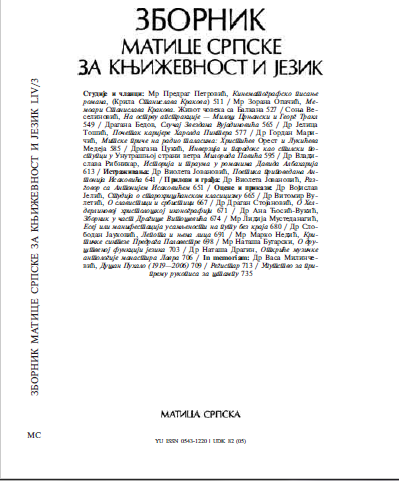ИСТОРИЈA И ТРAУМA У РОМAНИМA ДAВИДA AЛБЛХАРИЈA
HISTORY AND TRAUMA IN DAVID ALBAHARI’S NOVELS
Author(s): Vladislava RibnikarSubject(s): Serbian Literature, Theory of Literature
Published by: Матица српска
Keywords: David Albahari; Mamac; Snežni čovek; Gec i Majer;
Summary/Abstract: The three novels Snežni čovek (1995), Mamac (1996) and Gec i Majer (1998) by David Albahari are the central concerns of this article. Written during the decade marked by war and the destruction of Yugoslavia, these novels reveal characteristic changes in Albahari’s poetics, thematic interests and narrative strategies. They are analysed here in the context of the theory of trauma as discussed in contemporary cultural studies (Cathy Caruth, Geoffrey Hartman, etc) and illustrate three phases of the author’s creative enterprise. The historical trauma in Snežni čovek is utterly internalised and dramatised through the narrator’s monologue. The experience which is beyond language is expressed indirectly, thanks to the semantic density of the text and the interaction of literal and figurative meanings. The narrator of Mamac has the advantage of a greater temporal distance, his world is based on realistic coordinates, and he himself manages to name the sources of traumatic experience and place them in a wider historical context. History in his narrative is represented as a trap, as trauma. Gec i Majer is at the same time a painful story about the real horrors of the Holocaust and an interesting metatextual experiment in which the possibilities and borders of an artistic enactment of a historical trauma and the moral ambiguity of such a creative process are examined.
Journal: Зборник Матице српске за књижевност и језик
- Issue Year: 54/2006
- Issue No: 3
- Page Range: 613-639
- Page Count: 28
- Language: Serbian

